
It seems there are two types of Christmas cactus owners – those with large plants that bloom consistently every year and those who are frustrated with their stunted little plant that never seems to bloom.
When asked what their secret is, the former usually replies with a shrug of the shoulders and some care routine that sounds more like neglect than anything else.
The latter is frustrated because, despite their best efforts, they can’t seem to get the silly thing to bloom or grow. Often, one or more of these common Christmas cactus mistakes are the culprit.
(Don’t sweat it; they’re all easy enough to correct.)
When it comes to houseplants, we have a habit of being fixers and doers. If one of our plants isn’t growing the way we want it to, our initial response always seems to be – do something!
Unfortunately, this usually compounds the issue. Mistakes are made, and suddenly a plant that’s easy to care for gets the reputation of being fussy.
Like the Christmas cactus.
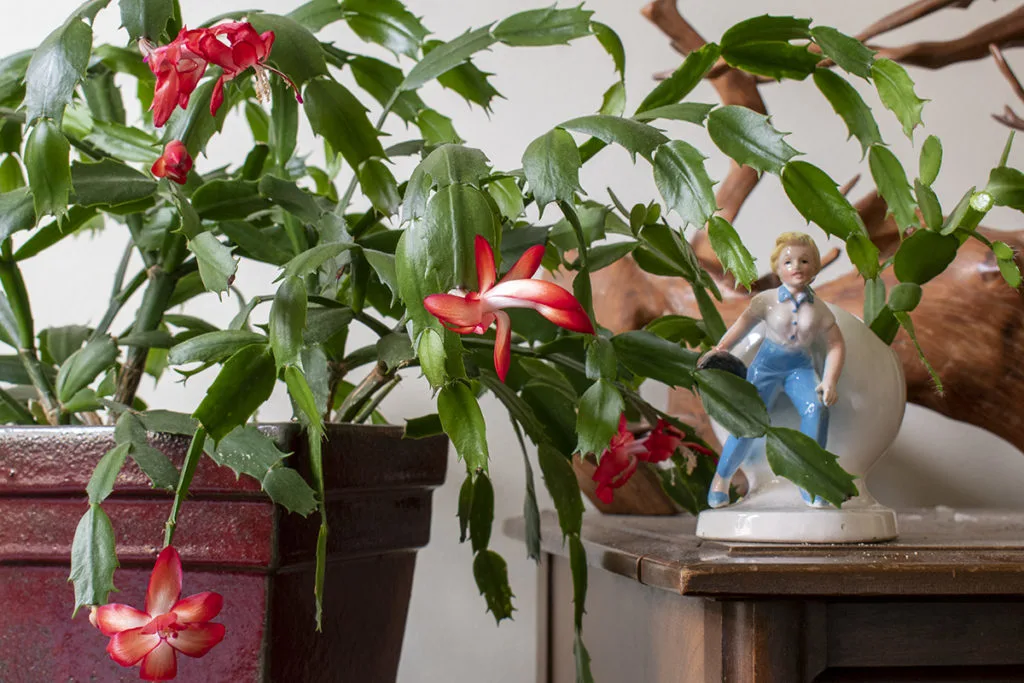
A little too much love ends in a Christmas cactus that never blooms, dumps its buds, won’t grow or drops leaf segments.
Believe it or not, Christmas cactuses are pretty laid-back plants that don’t need a whole lot from you. And getting them to set blooms each year is easy once you know the trick.
If you’re having trouble keeping your Schlumbergera happy, growing and blooming, read on to see if one of these common Christmas cactus mistakes is the cause.
1. Overwatering Your Christmas Cactus
We’ll start with the most common mistake out there – overwatering.
Hoo-boy, yeah, this is a big one. Overwatering applies to all houseplants, not just Christmas cacti. It’s the number one killer of houseplants, not disease, pests or forgetting to water them.
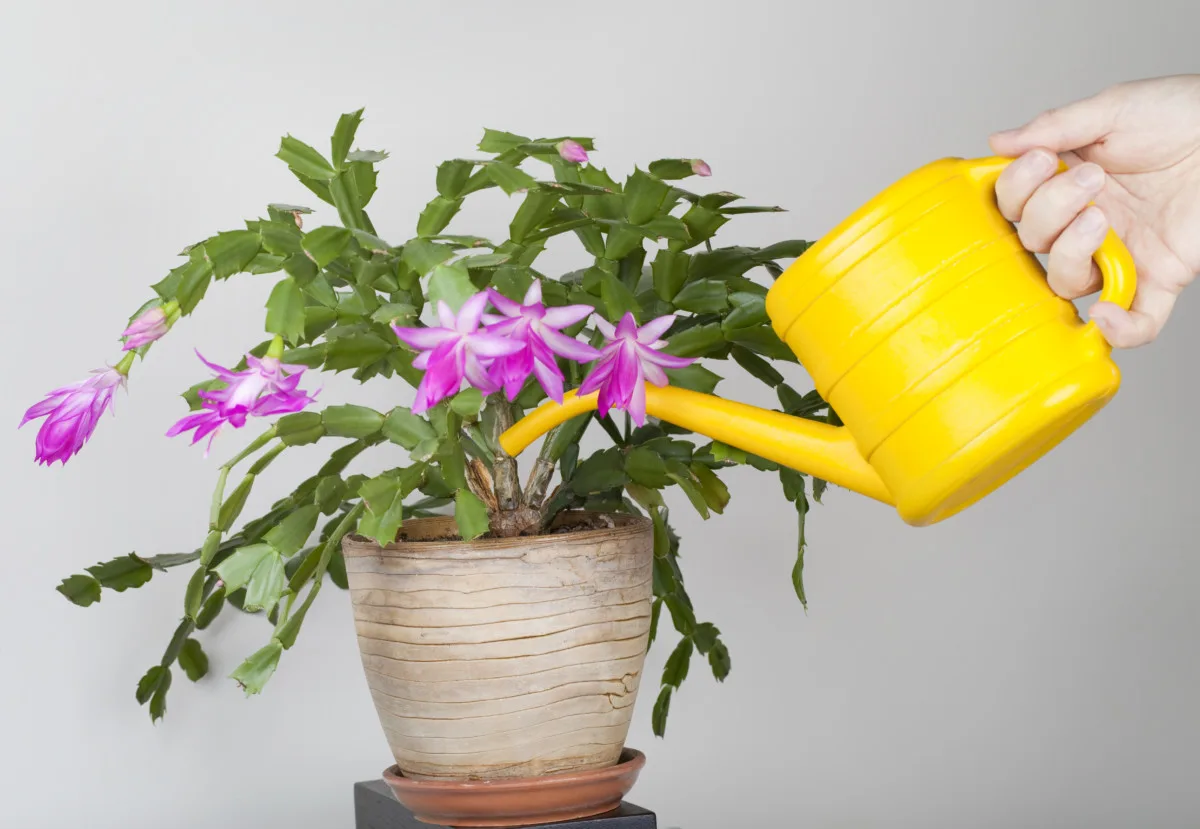
Christmas cactuses, despite their names, are succulents. Those fleshy leaves help the plant store water, allowing them to go longer without it. They’re also epiphytes.
Epiphytes rely on another plant (or structure) for support. Epiphytes naturally have smaller root systems for grabbing onto the plant they’re growing from. Because their root structures are smaller and usually exposed, the plant has become adept at taking in and storing water from the air, not just the soil. The root system doesn’t do well in constant moisture.
Then we come along, plant it in a pot of heavy soil and water the heck out of it. It’s a recipe for disaster.
Christmas cactuses with “wet feet” are notorious for developing root rot. If you water too often, the leaf segments will also start to rot and fall off. If anything, it’s better to underwater these guys. After all, it has stored up water in its leaves.
The best way to tell when your Christmas cactus needs water is to stick your finger in the soil. The first two inches should be dry before you water it again. Once the plant has had a few minutes for excess water to drain (It’s planted in a pot with a drainage hole, right?), tip out any remaining water from the saucer the pot is sitting in.
2. Using All-Purpose Potting Mix for a Christmas Cactus
As we’ve discussed, the root system of an epiphyte is designed to grow in sparse and coarse organic matter — dropped leaves, pebbles, the dirt washed into crevices by rain, and stuff like that. These plants were never made to sit in a pot with heavy potting soil.
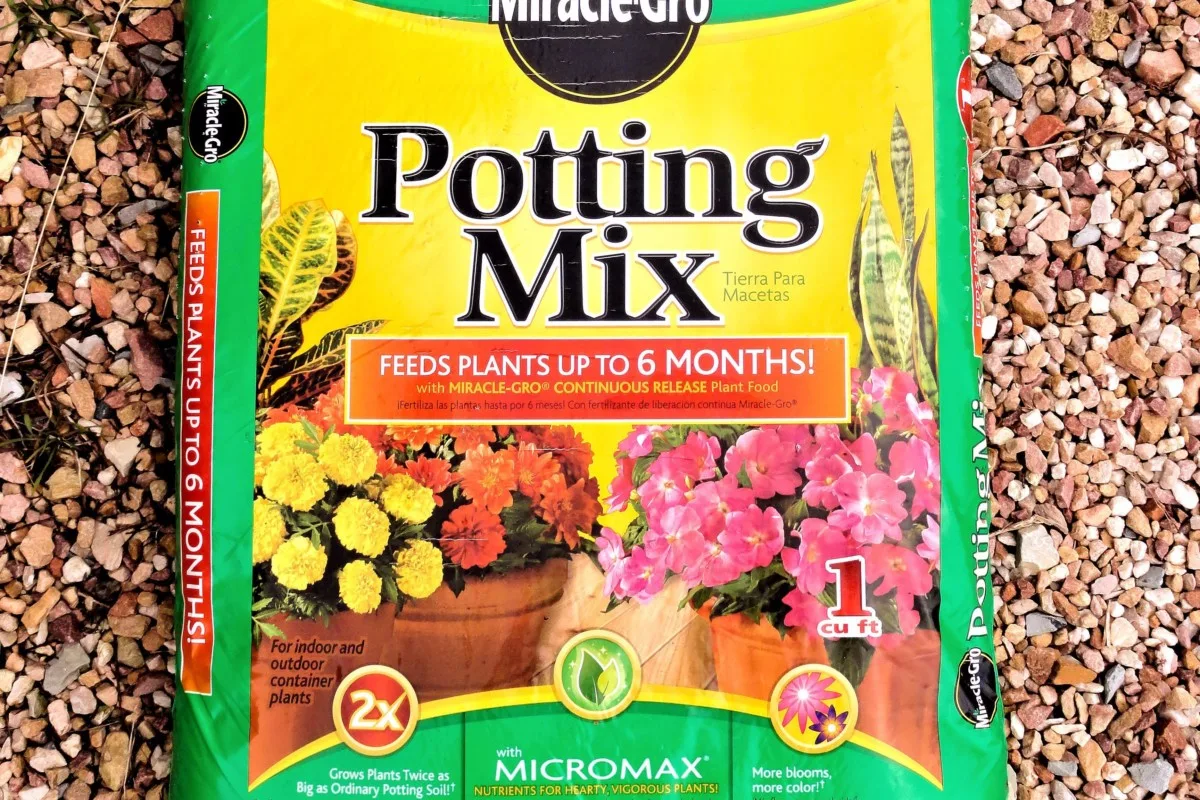
Using a general-purpose potting mix can damage the root system, causing stunted growth, poor nutrient uptake, and a dead plant.
If that’s what your plant is in, perhaps it’s time for a change.
Related Reading: “All-Purpose” Potting Mix & Why You Shouldn’t Use It For Your Houseplants
All of my Schlumbergera (No, I don’t have too many, why do you ask?) get potted in my own mix. Well, it’s sort of my mix. I add a few handfuls of an orchid potting mix to a bag of cacti/succulent mix and stir it all up. The result is a fluffy, quick-draining mix with plenty of bark pieces for roots to cling to. It’s a 2:1 ratio.
This allows the soil to drain quickly, and the roots aren’t compacted by the weight of damp soil.
3. Repotting Unnecessarily
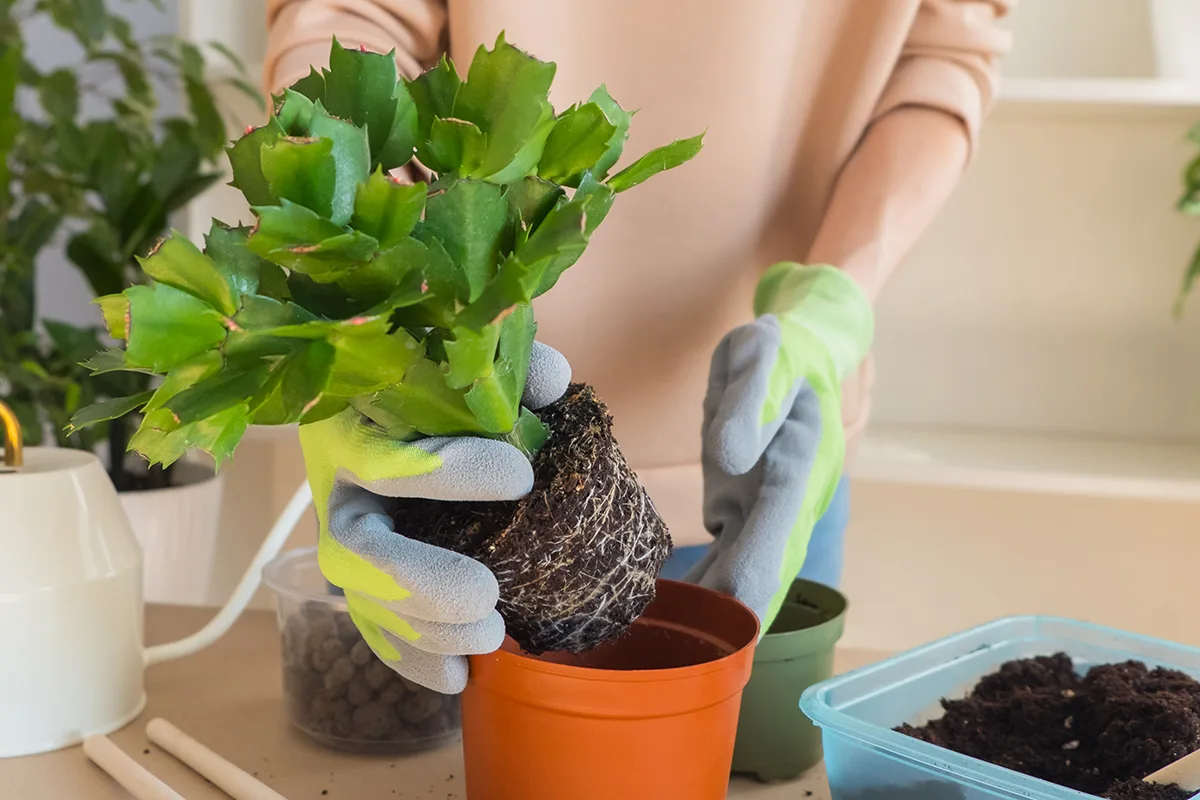
While we’re on the subject of repotting that Christmas cactus of yours, let’s discuss root-bound plants. Schlumbergera is one plant that can go ages before it needs to be repotted. They prefer to be root-bound and will keep growing bushier and longer.
So, when you ask your aunt with the Christmas cactus big enough to ‘eat’ the family dog, why she never repots it. Yeah, that’s why.
When you do your annual repotting of houseplants, skip the Christmas cactus, and it will reward you with new growth. All it needs is a little extra soil added to the top layer to replenish any that’s washed out through the drainage hole.
Eventually, you will need to repot the plant (once every 5-10 years) but only size up by one inch, and expect your plant to take a year to “move in” below the soil before you see results above it.
4. Not Fertilizing During the Growth Period
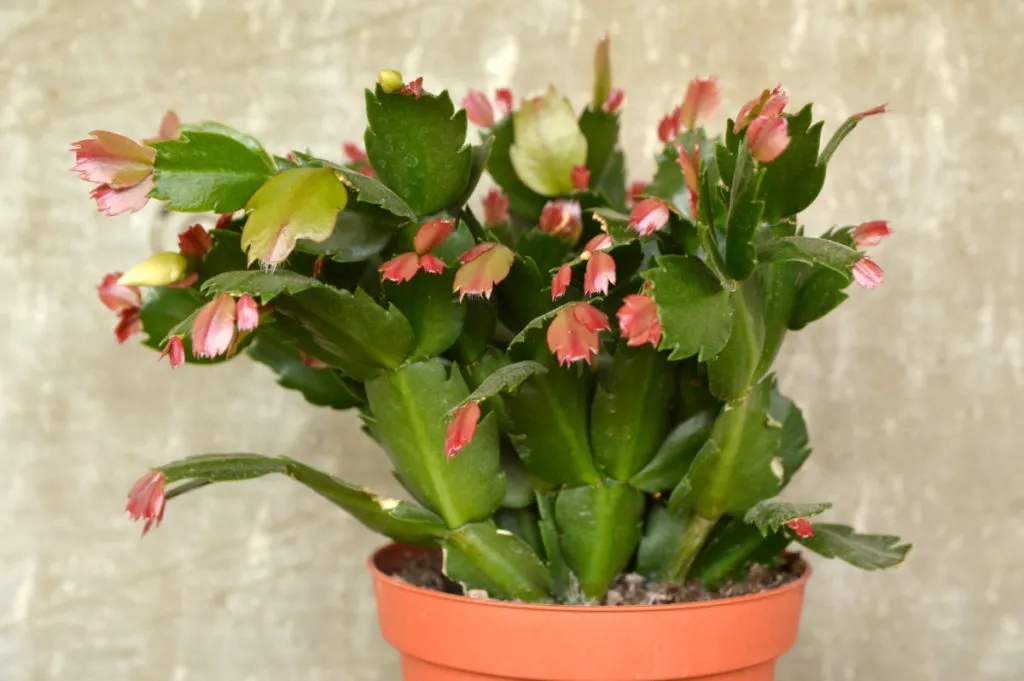
Each year, once the blooming period has finished, the plant will need to recuperate nutrients to grow and produce next year’s buds. Check your plant regularly after the blooming cycle and look for new growth. As soon as you see these tiny new segments begin fertilizing the plant regularly.
I have the best results fertilizing at half strength every other week. I use Schultz African Violet Plus (don’t let the name fool you!) which is packed with phosphorous for bud and flower development.
Don’t forget to flush the soil with water once a month to prevent the build-up of salts.
Stop fertilizing when the plant enters its dormant period before blooming. You can begin fertilizing again once it starts blooming, but it’s unnecessary.
5. Not Pruning Your Christmas Cactus
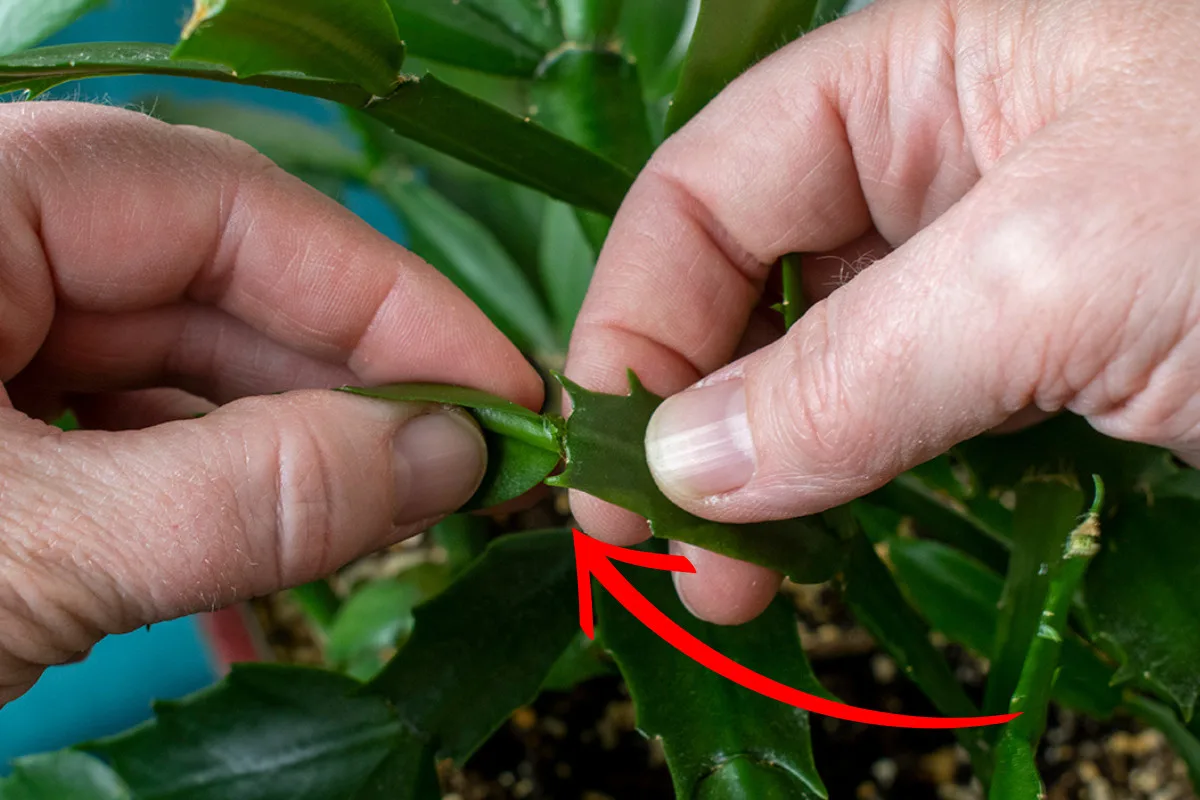
Pruning a Christmas cactus is just good hygiene. If you have a plant started from cuttings, chances are it’s a bit on the sparse side. If you keep letting it grow as is, you’ll have a lanky-looking plant. The only way to encourage it to branch out (literally) and grow fuller and bushier is with a good pruning.
It’s quite easy to do, and lucky for you, I’ve written up how to prune your Christmas cactus here. It only takes a few minutes to do. And the best part is you’ll end up with segments that can easily be propagated into new plants.
6. Missing the Dormant Stage
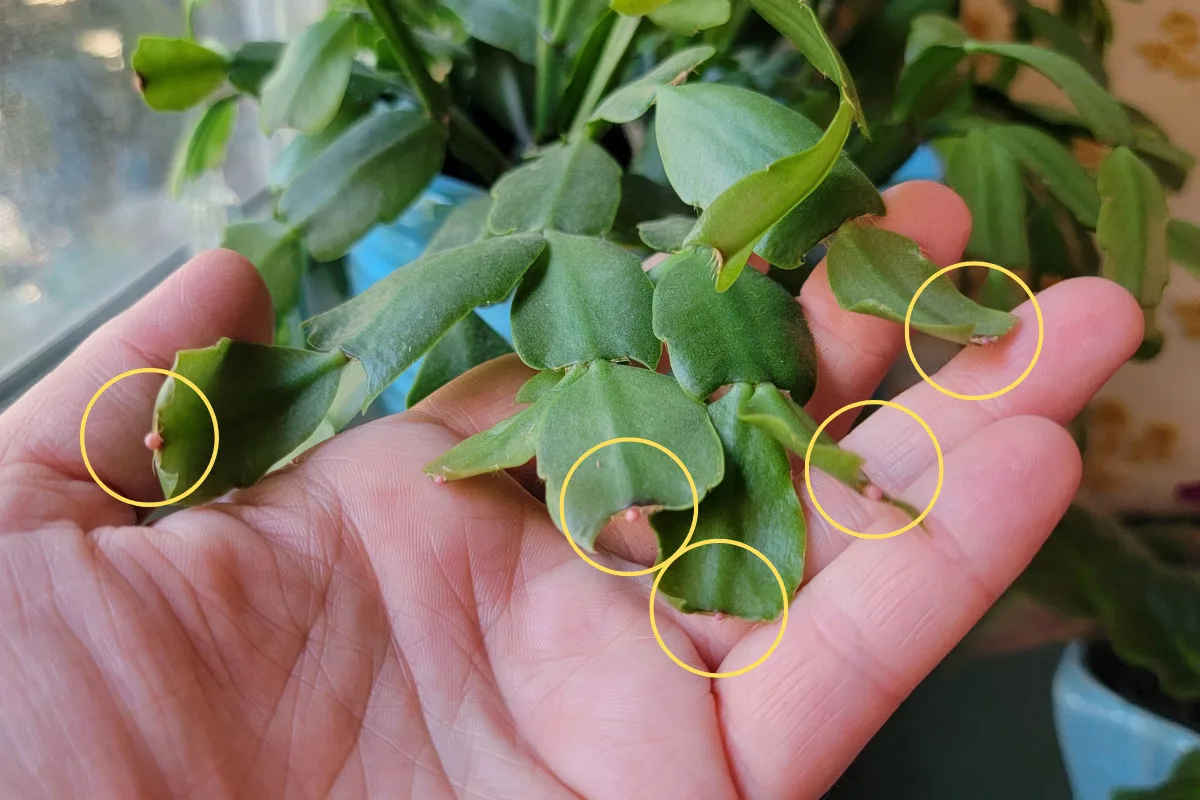
If your Christmas cactus isn’t blooming, it’s probably not going through the necessary dormant stage. In the wild, as the days get shorter and overnight temperatures get cooler, the plant will enter a period of dormancy for about a month to prepare for the blooming cycle.
In our temperature-controlled homes, the plant misses out on those environmental cues to make buds. But not to worry, we can easily trick the cactus into dormancy.
About a month before Christmas (or Thanksgiving, if you have a Schlumbergera truncata), move the plant to a cooler area of your home. Preferably somewhere with temperatures between 50-55 degrees. The location should be darker too. A closet, an interior hallway, or a room with no windows, all of these are great places to move your Christmas cactus so it will go dormant.
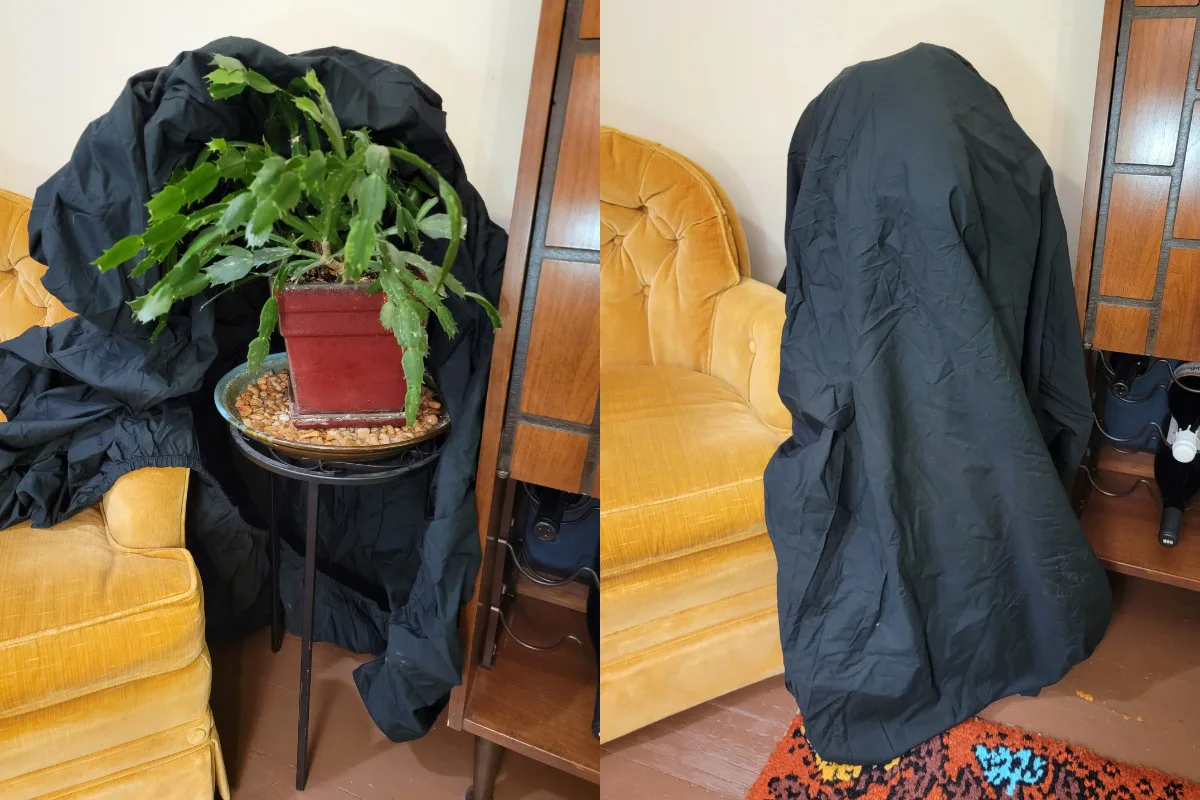
If the plant is too large to move, do what my brilliant friend does. She purchased a black, twin flat bedsheet and covers her massive Christmas cactus with it each fall.
After about three weeks, begin checking the plant daily. Once you see a few tiny pink buds at the end of the segments, move the plant back to its normal spot. It will continue to sprout new buds almost daily, and you’ll be treated to a riot of colorful blooms in a couple of weeks.
7. Moving the Plant After It Has Set Buds
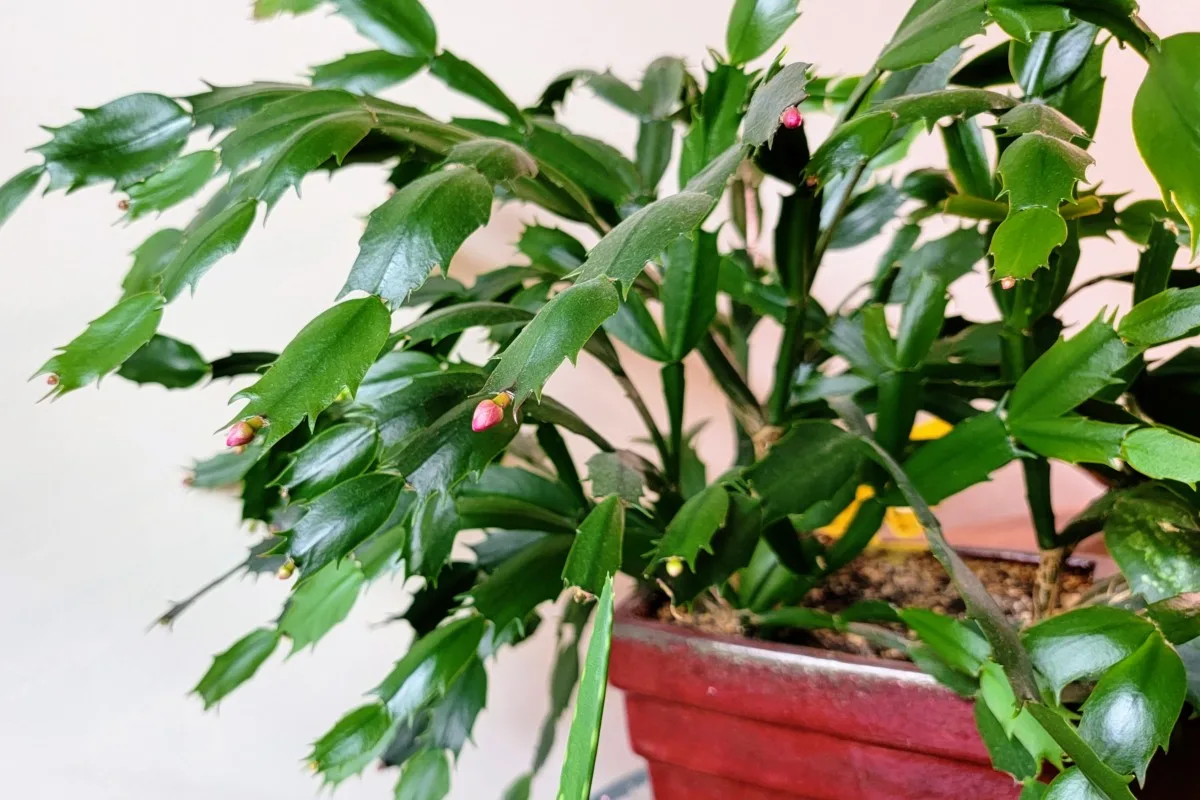
Okay, I know I said that Christmas cactuses are an easy-to-care-for houseplant, but this is the one area where they can be a pain. Once your plant begins to bud out, and you place it back in its normal location, don’t move it. All it takes is a change in temperature, light or too much movement for your Christmas cactus to decide, “Nope!” and start dropping buds.
If it’s happy enough to bud out in its current location, keep it there until after it’s done blooming.
Pay attention to what’s going on around it too. If it’s near a window, make sure no one opens the window, causing a drop in temperature. If you can, don’t keep your plant near a door that opens to the outside. The drafts can cause dropped buds too.
Correcting these mistakes will go a long way in ensuring you have a healthy plant covered in blooms for Thanksgiving each year.
Oh yeah, did I forget to mention that most people actually have a Thanksgiving cactus (Schlumbergera truncata)?
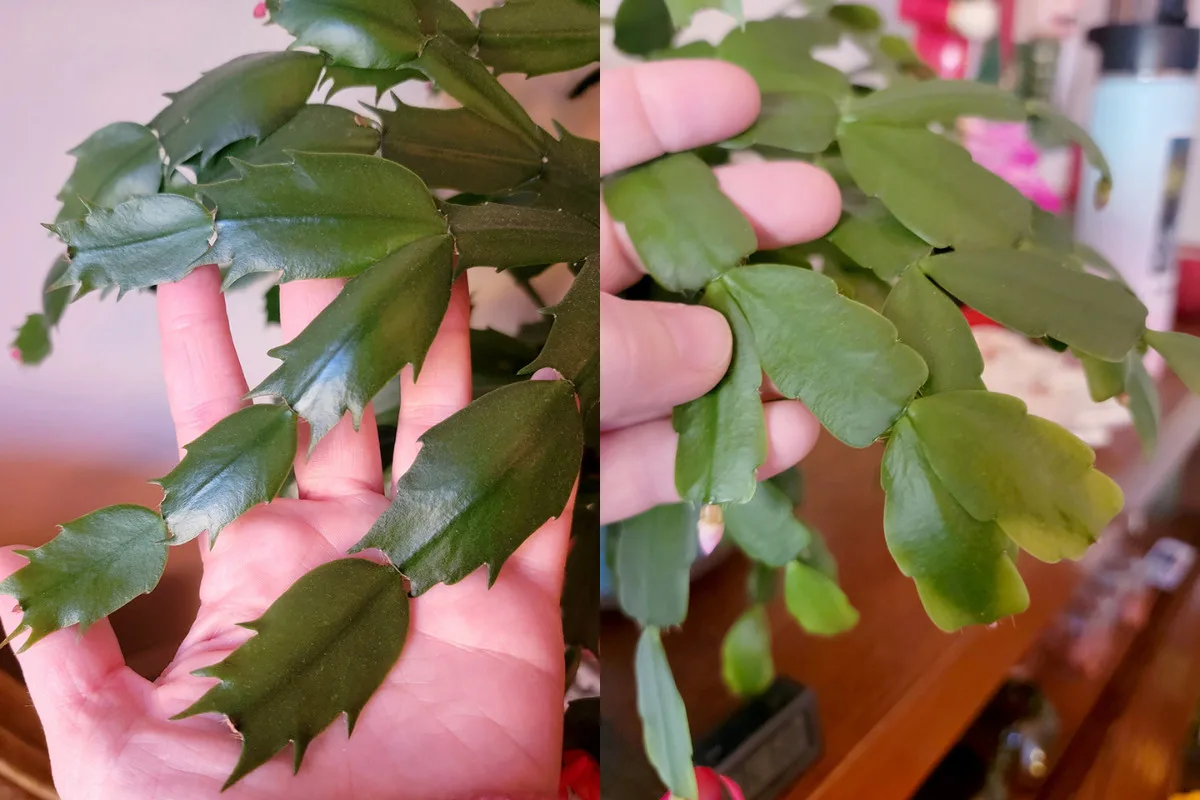
Check out my full Christmas cactus care guide to determine if you have a true Christmas cactus (Schlumbergera buckleyi) or a Thanksgiving cactus. The guide covers everything you need to know about these amazing plants.
Oh, and don’t worry, if you find out you have a Thanksgiving cactus, I can show you how to get your hands on a true Christmas cactus pretty easily.

Get the famous Rural Sprout newsletter delivered to your inbox.
Including Sunday musings from our editor, Tracey, as well as “What’s Up Wednesday” our roundup of what’s in season and new article updates and alerts.


